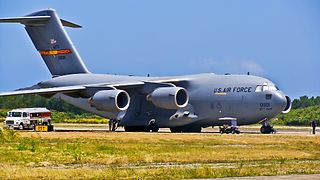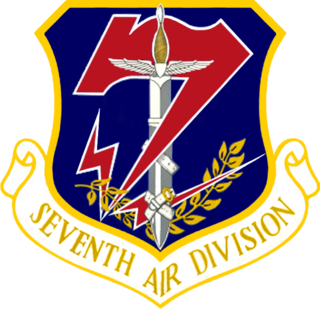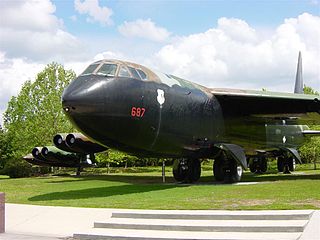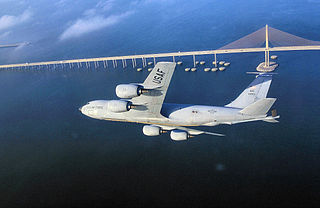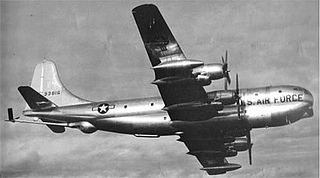- Reassigned from Sixth Air Force (ATO)
- Redesignated Very Heavy BG, March 1944
- XXI BC; 313th Bombardment Wing
- Circle R Tail Code; North Field, Tinian
- 24th Bombardment Squadron
- 39th Bombardment Squadron
- 40th Bombardment Squadron
- Inactivated in October 1948
- Reassigned from Sixth Air Force (ATO)
- Redesignated Very Heavy BG, March 1944
- XXI BC; 313th Bombardment Wing
- Circle X Tail Code; North Field, Tinian
- 1st Bombardment Squadron
- 5th Bombardment Squadron
- 99th Bombardment Squadron
- Inactivated in October 1948
- Activated, April 1944
- XXI BC; 315th Bombardment Wing
- Diamond B Tail Code; Northwest Field, Guam
- 15th Bombardment Squadron
- 16th Bombardment Squadron
- 17th Bombardment Squadron
- Inactivated in April 1946
- Reassigned from Fifth Air Force (SWPA)
- Redesignated Very Heavy BG, April 1944
- XXI BC; 314th Bombardment Wing
- Square M Tail Code; North Field, Guam
- 28th Bombardment Squadron
- 30th Bombardment Squadron
- 93d Bombardment Squadron
- Reassigned to: Twentieth Air Force (FEAF), May 1946
- Reassigned to: 19th Bombardment Wing (FEAF), August 1948
- Moved to: Andersen AFB, Guam, August 1948
- Moved to: Kadena AB, Okinawa, June 1950
- Combat in Korean War, 1950–1953
- Reassigned to: Strategic Air Command in June 1954
- Reassigned from II Bomber Command (ZI)
- Redesignated Very Heavy BG, April 1944
- XXI BC; 314th Bombardment Wing
- Square O Tail Code; North Field, Guam
- 6th Bombardment Squadron
- 43d Bombardment Squadron
- 52d Bombardment Squadron
- Inactivated in May 1946
- Reassigned from II Bomber Command (ZI)
- Redesignated Very Heavy BG, April 1944
- XXI BC; 314th Bombardment Wing
- Square P Tail Code; North Field, Guam
- 60th Bombardment Squadron
- 61st Bombardment Squadron
- 62d Bombardment Squadron
- Inactivated in December 1945
- Reassigned from Sixth Air Force (ATO)
- Redesignated Very Heavy BG, November 1943
- Redesignated Very Heavy BG, April 1944
- XX BC; XXI BC; 58th Bombardment Wing
- Chakulia, India, Hsingching, China (XX BC); West Field, Tinian (XXI BC)
- Triangle S Tail Code
- 25th Bombardment Squadron
- 44th Bombardment Squadron
- 45th Bombardment Squadron
- Inactivated in October 1946
- Reassigned from II Bomber Command (ZI)
- Redesignated Very Heavy BG, April 1944
- XXI BC; 314th Bombardment Wing
- Square K Tail Code; North Field, Guam
- 457th Bombardment Squadron
- 458th Bombardment Squadron
- 459th Bombardment Squadron
- Inactivated in November 1945
- Reassigned from II Bomber Command (ZI)
- Redesignated Very Heavy BG, July 1944
- XXI BC; 315th Bombardment Wing
- Diamond L Tail Code; Northwest Field, Guam
- 355th Bombardment Squadron
- 356th Bombardment Squadron
- 357th Bombardment Squadron
- Inactivated in April 1946
- Reassigned from II Bomber Command (ZI)
- Redesignated Very Heavy BG, July 1944
- Eighth Air Force; 316th Bombardment Wing
- Kadena Field, Okinawa
- 435th Bombardment Squadron
- 460th Bombardment Squadron
- 507th Bombardment Squadron
- Inactivated in May 1946
- Reassigned from II Bomber Command (ZI)
- Redesignated Very Heavy BG, August 1944
- Eighth Air Force; 316th Bombardment Wing
- Kadena Field, Okinawa
- 461st Bombardment Squadron
- 462d Bombardment Squadron
- 463d Bombardment Squadron
- Inactivated in June 1946
- Reassigned from II Bomber Command (ZI)
- Redesignated Very Heavy BG, August 1944
- Eighth Air Force; 316th Bombardment Wing
- Kadena Field, Okinawa
- 420th Bombardment Squadron
- 464th Bombardment Squadron
- 872d Bombardment Squadron
- Inactivated in January 1946
| - Reassigned from II Bomber Command (ZI)
- Redesignated Very Heavy BG, August 1944
- Eighth Air Force; 316th Bombardment Wing
- Kadena Field, Okinawa
- 876th Bombardment Squadron
- 880th Bombardment Squadron
- 884th Bombardment Squadron
- Inactivated in January 1946
- Reassigned from II Bomber Command (ZI)
- Redesignated Very Heavy BG, August 1944
- XX BC; XXI BC; 58th Bombardment Wing
- Dudkhuadi, India, Kwanghan, China (XX BC); West Field, Tinian (XXI BC)
- Triangle N Tail Code
- 676th Bombardment Squadron
- 677th Bombardment Squadron
- 678th Bombardment Squadron
- 679th Bombardment Squadron (1943–1944)
- Inactivated in August 1946
- Activated, July 1943
- Redesignated Very Heavy BG, November 1943
- XX BC; XXI BC; 58th Bombardment Wing
- Piardpba, India, Kiunglai, China (XX BC); West Field, Tinian (XXI BC)
- Triangle U Tail Code
- 768th Bombardment Squadron
- 769th Bombardment Squadron
- 770th Bombardment Squadron
- 771st Bombardment Squadron (1943–1944)
- Inactivated in March 1946
- Activated, August 1943
- Redesignated Very Heavy BG, November 1943
- XX BC; XXI BC; 58th Bombardment Wing
- Kharagpur, India, Pengshan, China (XX BC); West Field, Tinian (XXI BC)
- Triangle I Tail Code
- 792d Bombardment Squadron
- 793d Bombardment Squadron
- 794th Bombardment Squadron
- 795th Bombardment Squadron (1943–1944)
- Inactivated in March 1946
- Activated, November 1943
- XXI BC; 73rd Bombardment Wing
- A Square Tail Code; Isley Field, Saipan
- 869th Bombardment Squadron
- 870th Bombardment Squadron
- 871st Bombardment Squadron
- Inactivated in March 1946
- Activated, November 1943
- XXI BC; 73rd Bombardment Wing
- T Square Tail Code; Isley Field, Saipan
- 873d Bombardment Squadron
- 874th Bombardment Squadron
- 875th Bombardment Squadron
- Inactivated in August 1946
- Activated, November 1943
- XXI BC; 73rd Bombardment Wing
- V Square Tail Code; Isley Field, Saipan
- 877th Bombardment Squadron
- 878th Bombardment Squadron
- 879th Bombardment Squadron
- Inactivated in February 1946
- Activated, November 1943
- XXI BC; 73rd Bombardment Wing
- Z Square Tail Code; Isley Field, Saipan
- 881st Bombardment Squadron
- 882d Bombardment Squadron
- 883d Bombardment Squadron
- Inactivated in January 1946
- Activated, May 1944
- XXI BC; 315th Bombardment Wing
- Diamond Y Tail Code; Northwest Field, Guam
- 21st Bombardment Squadron
- 41st Bombardment Squadron
- 485th Bombardment Squadron
- Inactivated in June 1946
- Activated, May 1944
- XXI BC; 315th Bombardment Wing
- Diamond H Tail Code; Northwest Field, Guam
- 402d Bombardment Squadron
- 411th Bombardment Squadron
- 430th Bombardment Squadron
- Inactivated in April 1946
- Activated, March 1944
- XXI BC; 313th Bombardment Wing
- Circle E Tail Code; North Field, Tinian
- 398th Bombardment Squadron
- 421st Bombardment Squadron
- 680th Bombardment Squadron
- Inactivated in June 1946
- Activated, March 1944
- XXI BC; 313th Bombardment Wing
- Circle W Tail Code; North Field, Tinian
- 482d Bombardment Squadron
- 483d Bombardment Squadron
- 484th Bombardment Squadron
- Inactivated in June 1946
- Activated, December 1944
- XXI BC; 315th Bombardment Wing
- Various Tail Codes; North Field, Tinian
- 393d Bombardment Squadron
- Redesignated: 509th Bombardment Group, July 1946
- Became part of Strategic Air Command; assigned to 509th Bombardment Wing in November 1947.
|
















